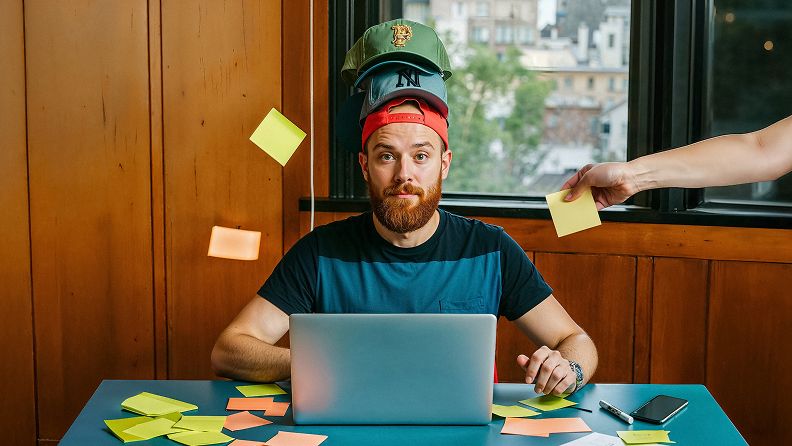When DTC Branding is Done Right [Examples Included]


quiThe pandemic permanently shifted buying behavior online—how brands responded determined their success or failure. While many relied on supply chains and brick-and-mortar retail, direct-to-consumer (DTC) brands flourished, with some even crashing their sites on launch day.
In March of 2022, Nike made headlines by reducing the amount of inventory they sent to Foot Locker, their largest retail partner, and moving towards DTC, veritably crashing Foot Locker stock.
Until a few years ago, most brands simply accepted [third-party selling watering down their brand experience] as a cost of doing business. Many brands were pushed to invest heavily in their websites and other channels like social media [allowing] them to sell directly to consumers. Now that they’ve seen the benefits of DTC sales—including stronger customer relationships and wider profit margins—they don’t want to go back.
— Dirk Hoerig, co-founder and CEO of commercetools, the leader in digital commerce solutions
As both legacy companies and start-ups lean deeper into the DTC business model, how do they drop anchor in the e-commerce waters?
DTC brands rely on offering a more personalized, frictionless alternative to buying products. Touting the promise of disrupting the antiquated supply chain and business models, DTC brands attempt to seamlessly and simultaneously blend into and stand out among the endless, curated flood of content (and competitors) on our social feeds and in our search results.
But there's a hitch.
To see success, good design is a requirement. Every touch point must be on brand. The customer journey, from awareness to interest, desire and action, must be thoughtfully designed.
In a cookieless world, you need first-party data to make smart choices on A/B testing social ads and landing pages. For that, you need rapid ideation and iteration and then everything from emails, checkout experiences and product packaging all need good design to create and capture demand for your product.
Let’s get into five DTC brands and explore how they use design to capitalize on the competitive advantages of today’s DTC business model.
DTC Brands nailing their DTC branding:
- Hello Fresh hauls it in with social ads and gorgeous forms
- Warby Parker is winning with web design and product packaging
- Glossier is gaining with email and video campaigns
- Away is attracting audiences with podcast art and magazine content
- Inkbox incites action with video and unboxing experiences
- Rimowa enters new markets with made for social content
- West Elm explores new frontiers with meta-verse content
- Quip sprinkles personality into oral care
- Acremade is crushing social media creative
Hello Fresh. From Online Forms to Printed Recipe Cards
Hello Fresh prioritizes user experience at each touchpoint.
With the help of a robust influencer marketing strategy, Hello Fresh has reached the masses through social media channels like Instagram and Youtube.
From these platforms, customers land on the Hello Fresh Plan Selector, a perfect example of how convenience is at the center of their branding.
Hello Fresh seamlessly integrates their branding into this simple form while offering visitors control and convenience at the very first step of their purchasing journey. Using custom icons for their food preferences not only breaks up the page and guides the visitor's eyes but also brings a subtle bit of personality to what might otherwise be a wordy, overwhelming page of text and numbers.
Versatility and fluidity are fundamental characteristics of strong visual branding guidelines. A brand’s ability to blend into the purpose of every context and medium relies heavily on the integrity of the design systems that comprise it. Building strong brand guidelines give you that ability.
The form’s design invites the visitor to explore, click around and discover how Hello Fresh can fit into their weekly routine and budget, with all the math calculated dynamically, down to the cost of each meal, without needing to scroll (at least on desktop).
This brand value-informed design is evident throughout the Hello Fresh experience. With every meal, comes an easy-to-follow physical recipe card complete with high-quality visuals that help guide you through the cooking process.
Hello Fresh Recipe Cards Designed by Sonja Dumas
It’s simple, concise, and more importantly, it’s print marketing that you don’t want to immediately chuck into the bin. Its purposeful design and value nudges you to stick it to the fridge door, handy for the next time you want cherry balsamic chicken. Again, Hello Fresh showcases its value for your convenience in a simple, effective way. Like their other customer touchpoints, their clean and simple branding is infused into the design, highlighting mouth-watering food photography at the center of it all.
Warby Parker. From Webpage Design to Product Freebies
A big opportunity DTC brands have at their disposal is the ability to establish customer loyalty through trust-building branding.
You don’t gain trust without giving potential customers a peak behind the curtain. For products like glasses that require a high degree of trust to ensure the correct prescription lenses and the right fit for frames on your face, Warby Parker gives you a crystal-clear vision.
Take a look at their “How Our Glasses Are Made” webpage. With beautifully captured stills and clips of its supply chain from conception to delivery, Warby Parker demonstrates its commitment to transparency around its production quality and process.
The challenge was designing a landing page that turns a meticulous process into a beautiful story that resonates with visitors.
DTC brands must make the purchase process frictionless. Create any doubt and the user will bounce to another solution.
Warby Parker’s mobile app offers an AR experience that allows hesitant buyers to try on a pair virtually from the comfort of their homes. On desktop, buyers can take a 10-minute vision test and update their prescription. Warby Parker then takes it one step further and gives you an offer to seal the deal—try before you buy. They’ll send you 5 pairs to try on for style and prescription and let you return what you don’t want.
Leaning on transparency is a massive factor in building DTC brand success. The business model relies on the personal connection brands make with their audience.
However, therein lies the problem (at least with eyeglasses).
Simply put: the brand almost melts away as customers don them. The personality of the wearer and the distinct style of the frames become one, and the latter becomes, let’s say, a bit blurry.
As a DTC brand, this is where Warby Parker excels—preserving that distinct brand identity even after purchase to build brand equity.
That brand equity is accrued through small opportunities, such as merch and packaging, that reinforce their story and brand identity. For example, consider the way they express their voice and story through a surprise and delight action using a microfiber lens cloth included with every purchase. The thoughtful design of peripheral items like this enrich the buyer’s journey, ensuring these stories stick and contribute to real brand equity.
Reddit post on r/copywriting about Warby Parker in 100 words on microfiber cloth.
Glossier. From Email Marketing to Video Campaigns
Glossier, a veteran in the eCommerce DTC space has honed their visual branding to a Glossier ‘G’.
With its signature millennial pink and a sharp emphasis on customer-centric formulation, the brand stands out—be it on the street or in the feed. A great way Glossier highlights its values is through its email marketing strategy.
With clean layouts and thoughtful email design, Glossier showcases some amazing customer reviews in their email campaigns (it’s not sales-y, if it’s user-generated, right?).
Glossier is also investing in high-quality video content embedded in their emails. In the example below, they mesh Olivia’s sweet personality with Glossier’s tagline, “You look good,” tying in the campaign into their wider customer-first branding.
The creative concept of this video campaign also exemplifies the brand’s ability to bend and explore what its visual identity can look like—a testament to Glossier’s versatile brand.
Away. From Podcasts To Online Magazines
Away is a great example DTC branding that has shifted the lens with which we view an industry—taking the luggage market, rebranding it and turning the focus away from a necessity of the travel experience to a symbol of adventure and exploration.
Away does this by investing in quality content that resonates with the values their market hold closest to their heart—exploring the reasons we travel and the places we find ourselves—with their limited podcast series, ‘Airplane Mode’.
Take a look at the custom illustrations they pair with each episode:
Their magazine, ‘Here,’ on the other hand, “tells compelling, thoughtful, and unique travel stories through the lens of local, creative, and influential people.”
Take a look at their beautiful travel guide covers:
What makes these two content channels so impactful in completing Away’s wider brand-building strategies is each of their unique brand identities. Deliberately distinct from one another, but also from the main brand itself, It emphasizes the care and value Away puts into building their brand’s stories, with their community as the nucleus of each branding decision.
Inkbox. From Video Tutorials To The Unboxing Experience
Inkbox has turned the tattoo industry on its head by offering customers painless, temporary tattoos (they last 1-2 weeks)—arguably, the two biggest obstacles for people who want Tattoos, but not regrets.
With influence from the edgy world of real tattoos, Inkbox is building a distinct brand image. They’ve developed a simple yet strong design system that is fluid enough to complement the seemingly endless line of talented artists they feature on their website. Their brand colors and fonts enable them to lay a stark background against the diverse styles and designs customers can choose from.
When talking about its core value proposition, and its personality as a company, the branding stands out. Check out their 30-second video tutorial on how to use their product:
There is a clear brand voice through the art direction and styling, yet it doesn't take away from the clarity of the instructions. This investment into concept creation and video content ensures that their core branding doesn’t fade into the background as they highlight new tattoo campaigns.
This approach to branding is seen even more clearly in the unboxing experience they’ve developed, with each personalized box set against their bright yellow branding and bold fonts. Each step of the unboxing experience shouts Inbox’s values, creating brand consistency from start to finish.
Rimowa. From Made-for-social Video to Clever Illustrations.
After over 112 years of business, Rimowa made the move towards extending their product line from exclusively luggage to complementary travel items like handbags, sunglasses and iPhone cases. This came as no surprise as travel plummeted during the pandemic and as travel behaviors changed drastically post-travel restrictions (more local travel and less hotel stays). We saw Rimowa shift from a luggage brand to a mobility brand (not dissimilarly to Away).
As Rimowa targets the younger demographic with NFT campaigns and LeBron James collabs, a line of iPhone cases was in natural lock step. The launch of these cases came with a social media marketing-led push, which you can see on both their website and their social media accounts.
They made the deliberate decision to include made-for-social videos on their campaign’s, ingenieurskunst, landing page. These videos have also appeared on their Instagram feed and Instagram highlights.
Check out the ingenieurskunst campaign.
Speaking of Instagram highlights, Rimowa has utilized this unique platform’s features to showcase some great content aimed at driving advocacy and traction in the younger demographic.
Rimowa launched a handful of branded gifs/stickers (cleverly named ‘Rimojis’) exclusive to Instagram–custom illustrations that resonate with their target market and encourage positive user-generated content (UGC). This simple, yet effective social media tactic is a great way a brand like Rimowa can socialize their brand evolution in a relevant and fun way.
Another Instagram highlight on Rimowas page is their Wallpaper highlights, meant to offer free and beautiful phone wallpaper to their audience. Another incredibly simple, low-lift tactic that supports their product line’s extension into phone accessories.
West Elm. Roblox Furniture Line.
This shift toward marketing to a younger demographic can be felt in the furniture industry as well. Not only can you find West Elm upping their TikTok game, they’ve recently begun their foray into the Metaverse with the launch of its own virtual world on Roblox with a line of 150 photo-realistic, high-fidelity furniture and branded merch that will allow users to customize their virtual homes with West Elm products and explore the virtual West Elm Hub complete with a furniture store, coffee shop and merchandise boutique.
Campaigns like this are a perfect example of more established DTC brands taking advantage of their brand equity and leading the helm into newer platforms that hold incredible potential for brands to foster communities and loyalty.
Quip. Branded illustrations.
Quip is the spitting image of the DTC disruptor brand, shaking up the oral care industry with simple, customer-centric messaging and sleek design. Their recognizable product design has helped carve a place in the arena, even expanding from toothbrushes to floss, mouthwash and gum.
They differentiated themselves by focusing on their market’s pain points and providing a clear (and beautiful) solution that came with all the fixings. They’ve put these products against the backdrop of a clear visual brand that showcases their friendly brand personality but doesn’t distract from the main stars. Quip’s illustrative brand expression can be seen throughout the customer journey from website blocks to social media posts and blog graphics
Quip uses custom illustrations and icons for blog graphics.
Building a design system like this allows quip to infuse its branding into its marketing collateral in a more subtle but deliberate way, building that brand recognition without overshadowing their innovative product design.
Acremade. Social Media Content.
AcreMade is the first DTC subsidiary of Puris, the leading supplier of pea protein in the US. They fuel some of retail’s biggest plant-based brands, from alternative meats to non-dairy milks.
As they find their footing in the DTC space, AcreMade has utlized Superside as a tool to support their design needs. With world-class design talent on standby, they are able to establish their brand across different channels with great social media creative.
By establishing a stong and clear visual brand and brand guidelines, the AcreMade team has equipped their Superside team with the design elements they need to deliver strong creative every time, helping Acremade standout in the spaces they market.
DTC Branding Requires an Investment in Design
The DTC business model offers countless opportunities to capitalize on changing buyer behavior, but you need quality design to make your marketing strategies more effective.
To stand on the shoulders of giant DTC brands you need a design team capable of:
- Thought-provoking social ads
- Entertaining and engaging video
- Illustrations that connect with your brand
- Conversion-focused landing pages
- Immersive email design
- Unboxing-worthy product packaging
- Printing to surprise and delight
Without these capabilities on your team, you’ll be drowning in a sea of competitors doubling down on design.
But. since more than 1/4 of marketers and nearly 1/3 of designers say their creative team doesn’t have the right skill sets they need to succeed, your team also needs the capacity to iterate, reduce ad fatigue and avoid burnout.
You can hire a design agency for ideation and fresh concepts, hire more in-house designers for capabilities you may want to try in the future, or maybe it's time to try a design partner—like Superside.
Laurella is a Product Marketing Specialist at Superside. With a background in B2B SaaS and a penchant for mind maps, she’s written content tackling everything from gender-biased design to partnership strategy. At Superside, she helps unearth nuggets of customer insights and makes them shine in case studies and articles. As a pandemic graduate, she finds the idea of watercooler-slack-channels scary but is always eager to send you a well-crafted meme. Connect with her on Linkedin.
You may also like these

An expert 7-step brand strategy framework
In an era where businesses are under pressure to produce results quickly, it’s easy to see branding as just another box to check off. However, a well-thought-out brand strategy framework isn’t just a marketing play—it’s a foundational business tool that helps teams prioritize messaging, work more efficiently and create long-term impact.During Superside’s Overcommitted Virtual Summit, branding expert and Twilio VP of Brand Adam Morgan delved into how companies can build brands that stand the test of time. Morgan, a veteran of branding initiatives at Adobe, Splunk and Twilio, provided a wealth of insights on how to approach branding with intention, align brand identity with business goals and ensure it connects deeply with customers. Dive in to learn more about the importance of purpose, audience alignment and strategic execution—all while keeping in mind the challenges of overcommitment and burnout that many creative teams face.Why branding matters more than everThere's a common misconception about branding strategies that they're just about visuals and logos. Morgan emphasized that brand strategy is about creating an emotional and strategic connection between a company and its audience.
7 top creative support solutions for teams and enterprises
There’s no denying that today’s marketing and creative teams are under more stress than ever. To deliver high-performing, top-quality assets at scale, many teams are getting fewer resources, smaller budgets and tighter deadlines.As an ever-increasing number of brands compete for audience attention, the demand for compelling content is getting higher—and essential for creative teams to meet.It’s no surprise then that in-house marketing and creative teams are turning to advanced creative support solutions to help enhance efficiency, streamline workflows and optimize production processes.From AI-powered design to cloud-based collaboration software and outsourced creative services, these solutions transform how teams work, allowing them to produce more assets faster without compromising quality.Our best advice to teams and enterprises on how to get this right? Make Superside your creative team’s creative team and free up your team to do their best work.
How to find creative partner agencies to boost 2025 strategy
Are your internal creatives battling to keep up as the demand for authentic, trustworthy content grows? For many brands, outsourcing creative makes sound financial sense. Plus, partnering with an experienced creative services team can bring fresh ideas and impressive scalability.80% of customers say that the experience a company provides is just as important as its products or services, meaning that driving great customer experiences is essential in 2025. Once again, creative partnerships pay dividends, as many creative agencies go well beyond KPIs to drive genuine cultural impact and build trust.Unlike traditional agencies, creative partner agencies also typically act as an extension of your team. Work with Superside, for example, and our talented designers will become your creative team’s creative team.






